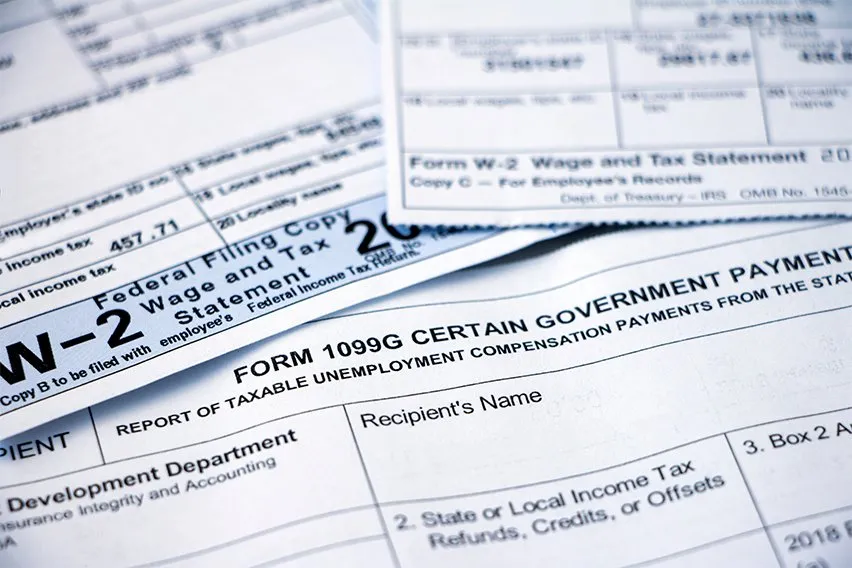What is the NOPAT Formula? – Net Operating Profit After Tax

It’s not enough to make sales as a small business; you need to make a profit too.
Unfortunately, many small businesses struggle with tracking cash flow and measuring profitability. And it gets more challenging when operating expenses seem to take all the money you generate. So what do you do?
In this article, we will show you how to calculate your Net Operating Profit After Tax with the NOPAT formula.
Here’s What We’ll Cover:
NOPAT vs. NOPLAT: What’s the Difference?
Advantages and Disadvantages of Net Operating Profit After Tax
More Accounting Resources for Businesses
What is ‘NOPAT’?
NOPAT – an acronym for Net Operating Profit After Tax – is a benchmark for measuring how much money a business earns from its core operations. Essentially, it represents a company’s profit without the influence of debt, expenses, and non-operating income taxes.
Why is this a big deal? Investors prioritize profit after taxes when choosing to invest in a company’s capital structure. When you look at a business financial statement with all the running costs, debts, and taxes, it’s hard to know if the company is making any profit. This can give you a false impression of the business’s financial health.

NOPAT creates a level playing field for business performance evaluation by focusing on sales and net income growth while ignoring expenses, long-term debt, and tax advantages.
Profit after taxes shows investors your income from operations. Net Operating Profit After Tax also comes in handy when you need to compare the profitability of businesses in the same industry with different capital structures.
How Is NOPAT Calculated?
Companies use two formulas to calculate Net Operating Profit After Tax (NOPAT).
Formula 1
The more common method is to subtract your effective tax rate from 1 and multiply the result by your operating income or earnings before interest and taxes (EBIT). That is;
NOPAT FORMULA = Operating income × (1 – Tax Rate)
Your operating income is your total operating expense minus your gross profit. Your operating expenses include depreciation, the cost of goods sold, salaries, benefits, and rents. On the other hand, your tax rate is the percentage of tax paid on your total income.
Formula 2
The second NOPAT formula is complex, and it is useful when you do not know your exact earnings before interest and tax. In this case:
NOPAT= (Net income + Non-operating income loss − Non-operating income gain + interest expense + tax) × (1 − tax rate)
Here’s a practical example to help you understand how these calculations work:
Let’s say your business earns an operating income of $120,000 with a 20% tax rate. To calculate your Net Profit After Tax, you will apply the NOPAT formula as follows;
NOPAT= 120,000 × (1−0.2)
So, your company’s Net Profit After Tax is $96,000. If you have categories of raw data, you can calculate your NOPAT using Excel or Google Spreadsheet. Dividing your net operating profit after tax by the total revenue generated gives you the NOPAT margin.
Are NOPAT and EBIT the Same?
The key difference between NOPAT and EBIT (Earnings Before Tax and Interest) comes down to how they determine a company’s profitability. EBIT measures a company’s profit level before tax deductions and interest expenses.
On the other hand, NOPAT shows your business profitability without considering the impact of non-operating expenses like debt and taxes.
NOPAT vs. NOPLAT: What’s the Difference?
With the similarity between these acronyms, it’s no surprise that many businesses mistake one for the other. However, NOPAT and NOPLAT are not the same.
While NOPLAT refers to Net Operating Profit Less Adjusted Taxes, NOPAT means Net Operating Profit After Tax.
The main difference between NOPAT and NOPLAT is that the latter accounts for changes in deferred taxes—these outstanding tax deductions count as assets or liabilities in your business financial records.
Essentially, NOPLAT refers to your company’s Net Operating Profit After Tax, including deferred taxes.
NOPAT vs. Net Income
Net income refers to a company’s net profit, that is, the bottom line. Unlike NOPAT, net income considers all expenses, taxes, and debts to determine the true performance of your business.
Investors look at NOPAT in a company’s income statement to know how profitable the company is. On the other hand, they use net income to determine the viability of a business.

Advantages and Disadvantages of Net Operating Profit After Tax
Pros
- NOPAT is used for cash flow calculations. It helps you to understand a company’s economic value added (EVA) measurement and operating efficiency.
- It provides an accurate representation of business profitability without debt and non-operating income taxes.
- Unlike other financial metrics, NOPAT is measured in monetary terms, which helps you understand your business’s cash flow.
Con
- When comparing businesses in the same industry, NOPAT fails to account for different growth stages.
Wrapping Up
NOPAT is one of the vital profitability metrics that should drive your business operations. It gives businesses a clear sense of their financial performance to help them make the right decisions.
More Accounting Resources for Businesses
RELATED ARTICLES

 1099 vs. W-2: Difference Between W-2 Employees & 1099 Contractors
1099 vs. W-2: Difference Between W-2 Employees & 1099 Contractors Tax Inclusive vs Tax Exclusive: What’s the Difference?
Tax Inclusive vs Tax Exclusive: What’s the Difference? How to Fill Out a W-2: A Box-by-Box Guide for Employers
How to Fill Out a W-2: A Box-by-Box Guide for Employers Self-Employment Tax: Definition and How to Calculate It
Self-Employment Tax: Definition and How to Calculate It What is a W3 Tax Form and How to File One
What is a W3 Tax Form and How to File One What is a W-4 Form?
What is a W-4 Form?